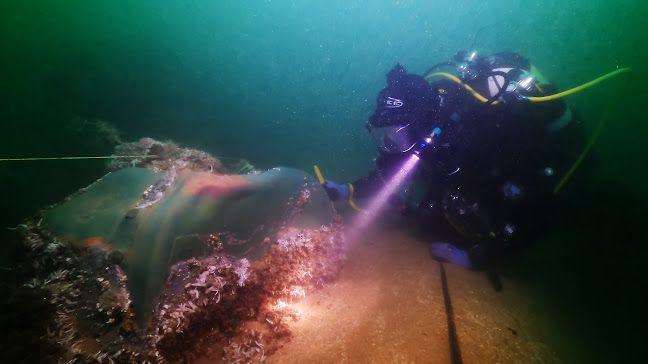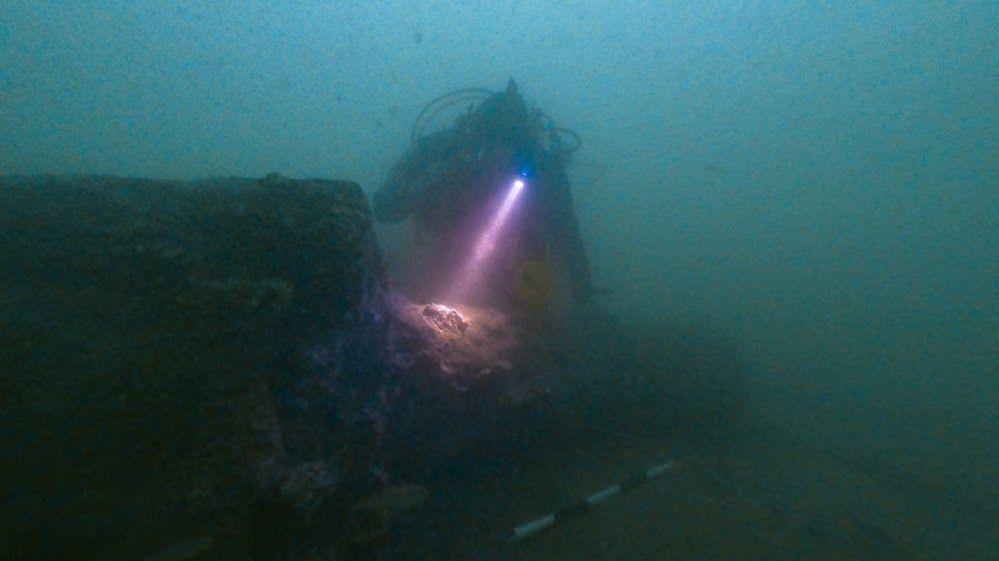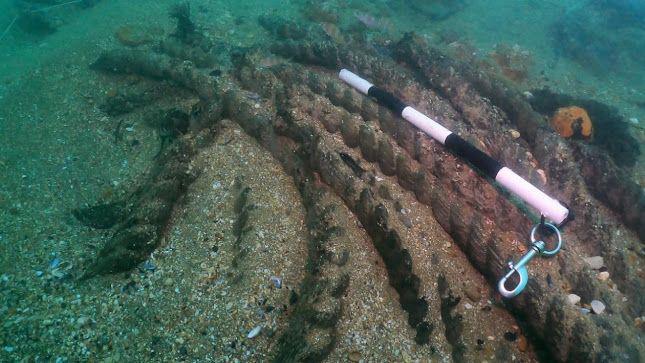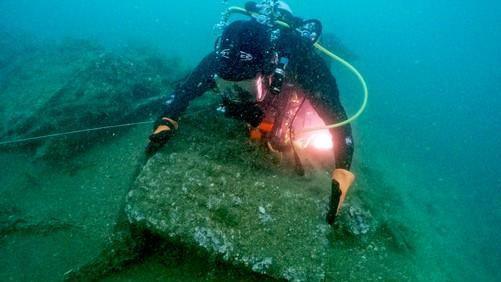Wrecked ship's cannon found during seabed dive

Divers also found swords, cauldron and wooden chests containing musket balls
- Published
Cannons and coils of rope from an English warship that sank in 1703 have been discovered by divers.
The Northumberland, a large 70-gun ship built in Bristol in 1679, sank off the Kent coast during high winds in what was known as "The Great Storm".
The latest survey to inspect the site, held in July, also revealed wooden chests containing musket balls, swords and wooden decks.
Hefin Meara, one of the Historic England maritime archaeologists who went on the diver, said: "What we're seeing on the seabed is that big, big element of the ship structure. It's fantastic."
Shifting sands means experts were able to see that The Northumberland, built for the Royal Navy by Bristol shipbuilder Francis Baylie, is more complete than previously thought.
"It's the exact kind of ship you think about when you think of great big warships of the age of sail," Mr Meara told BBC Radio Bristol.

The ship's cannons were also found by divers
He said a long series of investigations and surveys will now take place to "answer more questions of the past".
Mr Meara, who dived about 65ft (20 metres) to the ship, said: "On the dives we can see this great big iron cannon, there's large bits of wooden ship structure.
"But because it's so intact you can see a lot of the organic material you don't normally see - things like coils of rope, smaller wooden objects and organic artefacts like that.
"They're all lying on that decking, exactly where they would have been when the ship went down."

Coils of rope were also found from the ship
He added any work to lift the warship out of the sea is very expensive and would take significant restoration work.
"As soon as you lift it out of the water, it's at risk of decay," he said.
Get in touch
Tell us which stories we should cover in Bristol
Follow BBC Bristol on Facebook, external, X, external and Instagram, external. Send your story ideas to us on email or via WhatsApp on 0800 313 4630.
Related topics
- Published31 July
